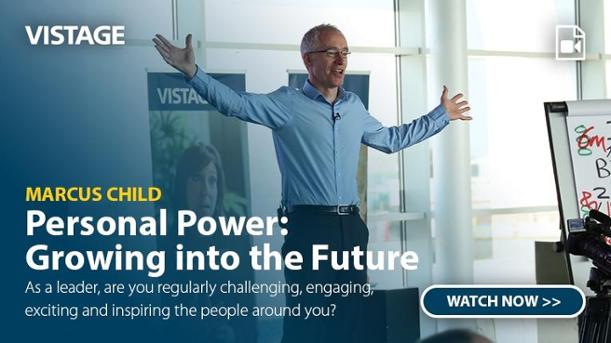
How many of your employees are really working for you?
According to Vistage speaker Don Rheem, the answer is fewer than you think. Don is a former biologist and ecologist. He sees the workplace as an ecosystem - and some of the people in it as a toxic presence.
The workplace ecosystem
For most companies, engagement levels form a bell curve. At one end are your actively disengaged employees - anything from 5% to 15% of the average workforce. Don calls them “zombies”. They’ve quit, but they haven’t told you yet; if you track their productivity, you’ll find they’re doing a half day’s work for a full day’s pay. The worst part? They’re contagious. They gossip, they grumble, and they draw others into toxic relationships by playing the victim. Disengagement loves company.
At the other end, you’ll find 5-15% of your workforce are actively engaged. They exceed expectations: pay them for eight hours, you effectively get twelve. They don’t necessarily spend more time in the workplace, but they do get more done while they’re there. The only downside? This drive is entirely down to who they are as people – it’s almost impossible to generate this level of engagement through incentive.
In the middle – accounting for between 45% and 75% of your workforce – are those employees who are somewhat engaged and disengaged. How much they achieve during the working day depends on one thing – and it isn’t money.
There’s no correlation between what you pay people and what they do on a daily basis. Money attracts and anchors people into the company, but it doesn’t determine their actual productivity or their level of engagement.
What engages employees?
To understand engagement, says Rheem, we must turn to neuroscience.
The limbic brain, which links high-order thinking and basic emotional responses, doesn’t recognise a difference between home and the workplace. Whether they’re on the clock or not, people’s behaviour is driven by emotion. Our emotions are instincts which drive us toward conditions the brain wants on a primal level: survival, safety and connection.
Gallup’s long-term research on employee engagement bears this out: one significant relationship with a trusted colleague means a sevenfold improvement an employee’s productivity.
What this means for managers is simple. You can’t run an effective business without addressing the emotional needs of your employees. The two questions their limbic brains are asking, all day long, are “what’s next for me?” and “how am I doing?”
If they don’t receive a clear answer from you, they’ll not feel safe or connected. They’ll look to their colleagues for reassurance – and that’s when the zombies get them.
5 ways to keep your team alive
- Pay attention to good performance.
Praise in public. Notice when things are going well and acknowledge them, specifically. Use the vocabulary of your core values as you interact with your employees - “I saw our core value of collaboration in the work you did on that project, and I want to thank you for it.”
- Comment on specific things you’ve observed.
Don’t start with “it’s come to my attention”, or words to that effect – and don’t lead with an assumption. Instead, tell people what you’ve observed – “I’ve noticed you don’t say a lot in team meetings” is substantive.
- Explain what will change if they change.
The more disengaged an employee is, the less connection they see between their shortcomings and your business. Explain what happens as a result of their behaviour, and what would happen if it changed.
- Set specific targets.
Remember, employees’ brains constantly want to know “what’s next for me” and “how am I doing?” You want them to change for the sake of the workplace culture, but you need to set a clear, measurable and specific target for them to implement themselves. “I’d prefer to see you visiting existing clients at least 25% of the time” is good. “You’re not out on the road enough” is not.
- Engage with them regularly and frequently.
A monthly meeting is not enough. A yearly appraisal is nowhere near enough. “This is not coddling employees,” says Don, “this is sending them regular signals about how they’re doing.” Those signals directly address the two driving questions, and build relationships between leaders and employees, which builds engagement with the company and its values.
Tone and structure - the triple S model of assertiveness
Of course, you are still a manager to your people. You’re a leader – not a friend. It’s important to keep a sincere, assertive tone in your relationships with employees, building trust without losing status.
Vistage speaker Ken Allison offers a simple model to keep the dynamics of your relationship understood. He calls it the Triple S:
- Show that you understand
- Say why there’s a problem
- State what you want to happen
Criticism in this model might sound like this:
- “I understand you’ve been missing deadlines because you’ve been ill.” (This shows understanding by mentioning the reason – it’s not enough to say “I understand”.)
- “I’d have preferred it if you’d told me, so I could reassign some of the work and get the project done on time.” (This says how you feel and why, explaining the problem in real terms.)
- “I’d like you to get the rest of the work with me by close of play Friday, and in future, to let me know if there’s a problem with a deadline when the problem emerges – that will help us allocate work differently if it’s necessary.” (This states what you want the employee to do next, which answers Don’s two key questions and provides them the safety they need. Asking questions yourself invites resistance, so don’t do it!)
Ken recommends that you start using this model in writing, where it’s easier to check exactly what you’re saying and make sure it has the right weight. Use it in emails and letters, and watch the impact of your feedback change.
As your feedback begins to directly address the questions raised by the limbic brain – “what’s next for me?” and “how am I doing?” – you’ll find your employees feel safer in their own person, and more connected to you and your company’s values. They’ll listen to you, instead of their disengaged colleagues – and those disengaged employees, once they’re disconnected from their colleagues, may finally decide to quit before you have to let them go.
More from Vistage:

